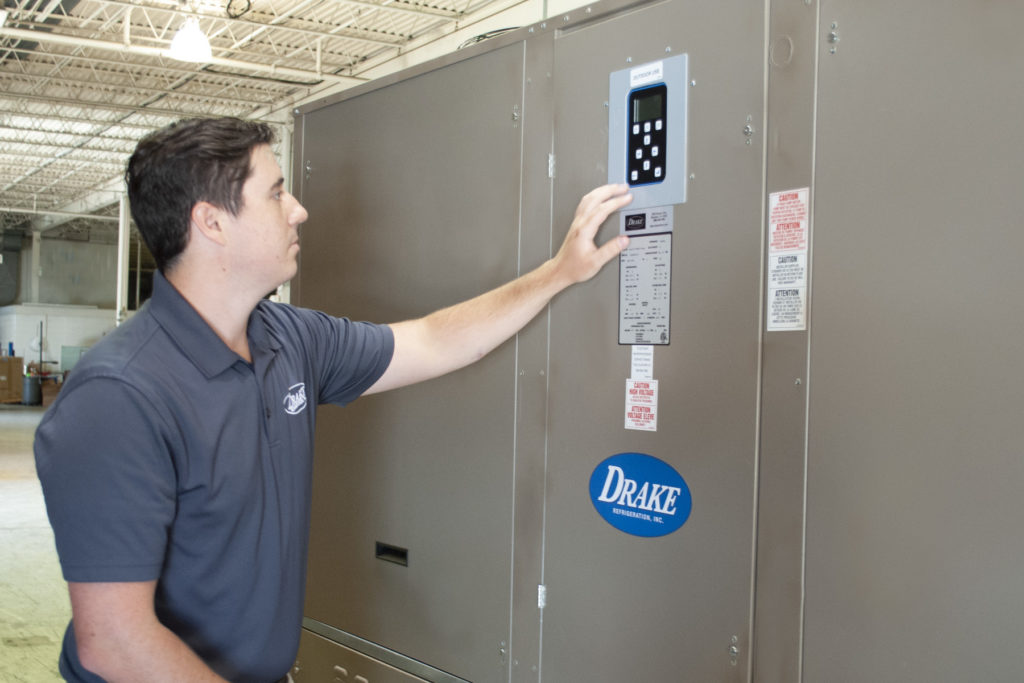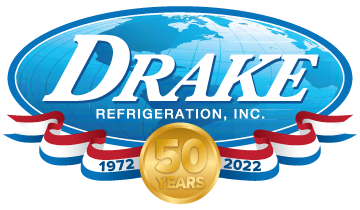
Process chillers for brewery, dairy, industrial, medical, and other applications help ensure your equipment stays cool during processing. How do they do that? In a nutshell, chillers work by delivering a continuous flow of refrigerant to the cold side of the evaporator at the desired temperature. A chiller then pumps the cooled fluid through the process to remove heat from your equipment and funnel it back to the return side.
In this article, we’ll cover more of what you need to know about how chillers work, including the essential parts of a chiller and the various phases of the cooling process.
Essential parts of a chiller
No matter the type of chiller you need for your application, every model will contain the following components that help keep your processes cool:
Evaporator – Located between the expansion valve and suction line that’s connected to the compressor, brazed plate or barrel sized evaporators serve as a central hub where the refrigeration cycle begins.
Compressor – The role of a chiller compressor is to compress the low-pressure gas from the evaporator to convert it into a high-pressure gas before traveling to the condenser.
Condenser – Situated between the compressor and expansion valve, chiller condensers are available in air-cooled and water-cooled options, and can be configured in a split arrangement. Read more about the differences between air-cooled and water-cooled chillers on our blog.
Expansion valve – Electronic expansion valves (EEVs) use a stepper motor that helps to precisely regulate the valve’s position, allowing for tight superheat control.
Phases of the chiller cooling process
The chiller evaporator, compressor, condenser, and expansion device each undergo a thermodynamic process during the cooling process. The following four phases summarize how a chiller gets the job done:
Phase 1
First, the chiller evaporator acts as a heat exchanger where it collects and carries process heat to the cool liquid refrigerant inside the chiller. Then, the process heat boils the refrigerant, causing the refrigerant to convert from a low-pressure liquid to a low-pressure gas. Meanwhile, the temperature of the process coolant lowers.
Phase 2
Next, the low-pressure gas travels to the compressor and it’s main job is to increase the pressure of the outgoing refrigerant vapor so that it reaches a high enough temperature to release its heat in the condenser.
Phase 3
Inside the condenser, the refrigerant vapor returns to a liquid. Ambient air or condenser water removes the heat from the vapor-to-liquid conversion process, depending on whether you have an air-cooled chiller or a water-cooled chiller.
Phase 4
The last phase of the cooling process involves the liquid refrigerant making its way to the expansion valve where it is metered before it enters the evaporator and repeats the cooling cycle once again.
What to look for in a chiller
When researching process chillers, keep an eye out for these critical features that will help ensure you receive optimal function and performance:
- Industrial strength performance
- Consistent temperature control
- Year-round operation
- Capacity modulation
- Customizable controls
- Energy efficiency
- Reliability
Do you need help selecting the best chiller for your application and needs? Reach out to our sales team to learn about our robust custom-capable line of compressor power ranging from ¼ hp to 200 hp in single-circuit, dual-circuit, and dual-circuit tandem chiller arrangements. Our engineered solutions are available with short lead times and are backed by our expert customer and technical service team. You can also request information or a quote online or give us a call at call (888) 289-7299.

